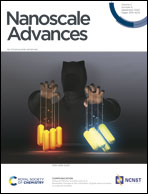Development of biological metal–organic frameworks designed for biomedical applications: from bio-sensing/bio-imaging to disease treatment
Abstract
Metal–organic frameworks (MOFs) are built using various organic ligands and metal ions (or clusters). With properties of high porosity, tunable chemical composition, and potential for post-synthetic modification, they have been applied in biomedicine, especially in bio-sensing, bio-imaging, and drug delivery. Since organic ligands and metal centers (ions or clusters) in the structure of MOFs can directly influence the property, function, and performance of MOFs, strict screening of organic ligands and metal centers is necessary. Especially, to improve the application of MOFs in the field of biomedicine, biocompatible organic ligands with low toxicity are desirable. In recent years, biological metal–organic frameworks (bio-MOFs) with ideal biocompatibility and diverse functionality have attracted wide attention. Endogenous biomolecules, including nucleobases, amino acids, peptides, proteins, porphyrins and saccharides, are employed as frameworks for MOF construction. These biological ligands coordinate with diverse metal centers in different ways, leading to the structural diversity of bio-MOFs. In this review, we summarize the organic ligand selectivity in constructing different types of bio-MOFs and their influence in biomedical applications with attractive new functions.

- This article is part of the themed collections: Editor’s Choice: Functional MOFs and COFs, Popular Advances and Recent Review Articles


 Please wait while we load your content...
Please wait while we load your content...